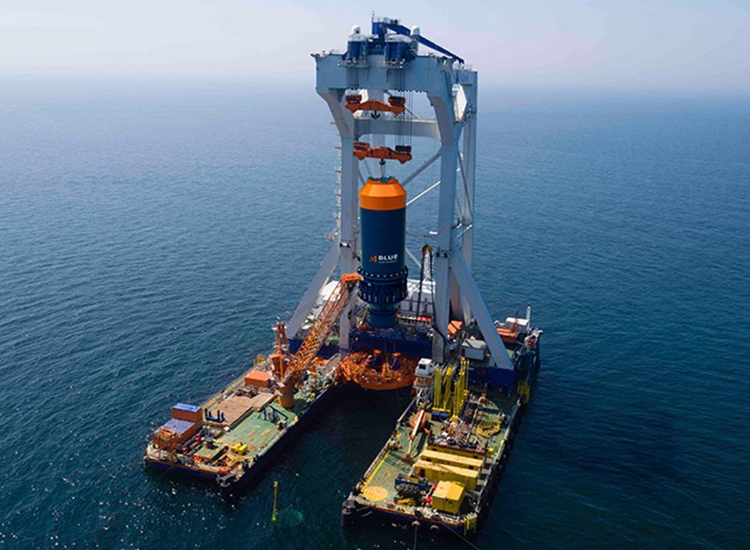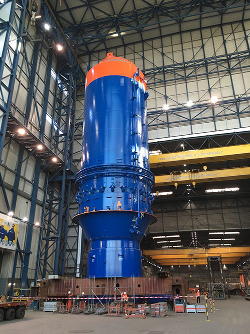
The Blue Pilot project will test a new type of pile driver, designed to reduce the cost and underwater noise associated with the construction of offshore wind farms.
Conventional hammers used for installing offshore foundations use a steel ram that hits the pile to drive it down into the soil. This steel-on-steel impact results in high stresses in the pile, and also creates underwater noise that can impact marine life.
The new Blue Hammer pile driver was developed by Dutch technology company Fistuca, a spin-off from Eindhoven University of Technology.
The project partners, which also include the UK’s Carbon Trust Offshore Wind Accelerator (OWA), E.ON, Statoil and Shell, among others, claim it could lead to savings of up to euro €33-40m over the lifetime of a 720MW offshore wind farm, or a levelised cost of energy reduction of €0.9-1.2 per MW/h.
The Blue Hammer consists of a large water tank containing an open combustion chamber, according to Jasper Winkes, founder and managing director of Fistuca.

“Instead of using a steel ram the Blue Hammer uses a large water column that is thrown up in the air using the combustion of a gas mixture,” he said. “The water then falls back, creating a long lasting blow that pushes the pile into the soil.”
This cycle is repeated until the pile is driven into the soil.
The hammer produces a blow that lasts between 100 and 200ms (milliseconds), compared to 4-8ms for conventional pile drivers, while the force builds up and reduces gradually.
This limits the acceleration and vibration of the pile, reducing noise.
“On top of that the energy level is very high, more than six times higher than the largest hydraulic hammer in the industry, meaning fewer blows are needed,” said Winkes.
Consequently, it could reduce underwater noise levels by up to 20dB, and reduce fatigue damage during installation on the pile by up to 90 per cent.
A full-size monopile will be installed off the coast of the Netherlands this summer, for tests to validate the predicted noise levels and fatigue damage.




Red Bull makes hydrogen fuel cell play with AVL
Surely EVs are the best solution for motor sports and for weight / performance dispense with the battery altogether by introducing paired conductors...